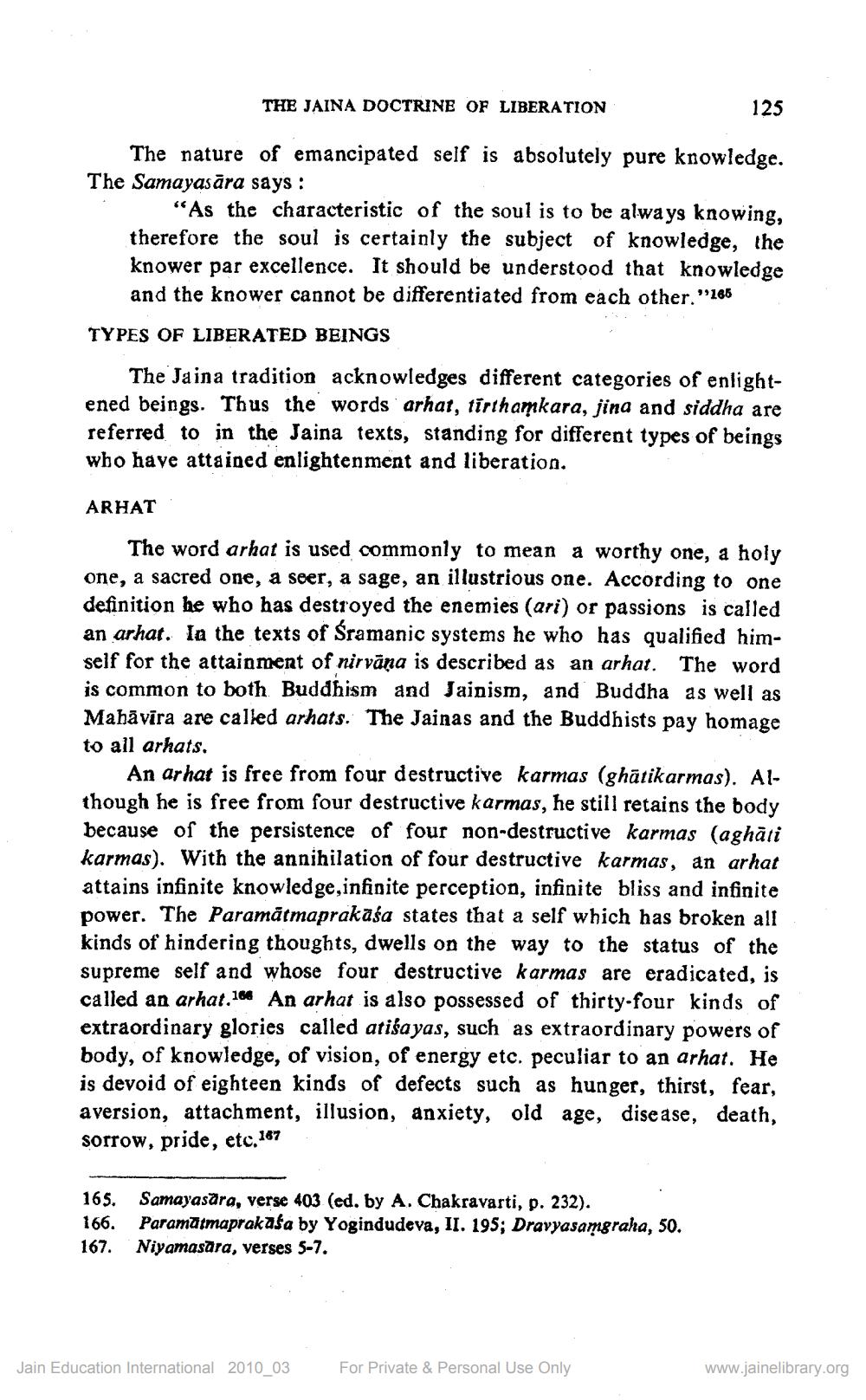________________
THE JAINA DOCTRINE OF LIBERATION
125
The nature of emancipated self is absolutely pure knowledge. The Samayas āra says:
“As the characteristic of the soul is to be always knowing, therefore the soul is certainly the subject of knowledge, the knower par excellence. It should be understood that knowledge
and the knower cannot be differentiated from each other."285 TYPES OF LIBERATED BEINGS
The Jaina tradition acknowledges different categories of enlightened beings. Thus the words arhat, tirthamkara, jina and siddha are referred to in the Jaina texts, standing for different types of beings who have attained enlightenment and liberation.
ARHAT
The word arhat is used commonly to mean a worthy one, a holy one, a sacred one, a seer, a sage, an illustrious one. According to one definition he who has destroyed the enemies (ari) or passions is called an arhat. In the texts of Sramanic systems he who has qualified himself for the attainment of nirvāna is described as an arhat. The word is common to both Buddhism and Jainism, and Buddha as well as Mahāvīra are called arhats. The Jainas and the Buddhists pay homage to all arhats.
An arhat is free from four destructive karmas (ghātikarmas). Although he is free from four destructive karmas, he still retains the body because of the persistence of four non-destructive karmas (aghāti karmas). With the annihilation of four destructive karmas, an arhat attains infinite knowledge,infinite perception, infinite bliss and infinite power. The Paramātmaprakaśa states that a self which has broken all kinds of hindering thoughts, dwells on the way to the status of the supreme self and whose four destructive karmas are eradicated, is called an arhat.166 An arhat is also possessed of thirty-four kinds of extraordinary glories called atiśayas, such as extraordinary powers of body, of knowledge, of vision, of energy etc. peculiar to an arhat. He is devoid of eighteen kinds of defects such as hunger, thirst, fear, aversion, attachment, illusion, anxiety, old age, disease, death, sorrow, pride, etc. 107
165. 166. 167.
Samayasāra, verse 403 (ed. by A. Chakravarti, p. 232). Paramātmaprakasa by Yogindudeva, II. 195; Dravyasamgraha, 50. Niyamasāra, verses 5-7.
Jain Education International 2010_03
For Private & Personal Use Only
www.jainelibrary.org




